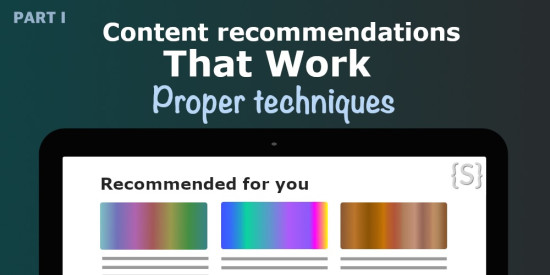Having proper content recommendations is essential for any website that publishes materials, as it helps to keep users engaged and on the site for longer periods of time. We can use different methods, including AI and basic algorithms, to provide the audience with the most relevant content recommendations.
I want to make sure that we cover this topic, and this is why we have a series of articles instead of just one post. By splitting this topic into separate articles, we will be able to dive deeper into each strategy and provide a more comprehensive understanding of how to implement them for maximum effectiveness.
This topic is very advanced and can be overwhelming for some, so I will break it down step by step and provide as many details as I can to make you an expert in no time.
Part 1. Proper techniques. The first step to effective content recommendations is understanding the different techniques available. This is what we will be covering in the first part of the series. I will walk you through everything you need to know to get started, including different and real-world examples. We will learn about the Recommendation Pipeline System (RPS) and how it works.
Part 2. Coding the system. This part will be very technical as we delve deep into coding the structure and framework for the Recommendation Pipeline System (RPS). This step is important so that we abstract the recommendation logic into a single module instead of creating chaos of code without the proper structure.
Part 3. Content-based system. Part three of the series will focus on the Content-based recommendation system, where we will explain how to provide recommendations based on the user's interests and previous interactions with your platform. This part is incredibly helpful because I will provide a detailed step-by-step explanation with drawings and diagrams, making it simpler to understand and incorporate into your system.


